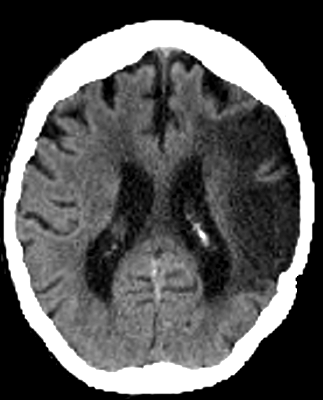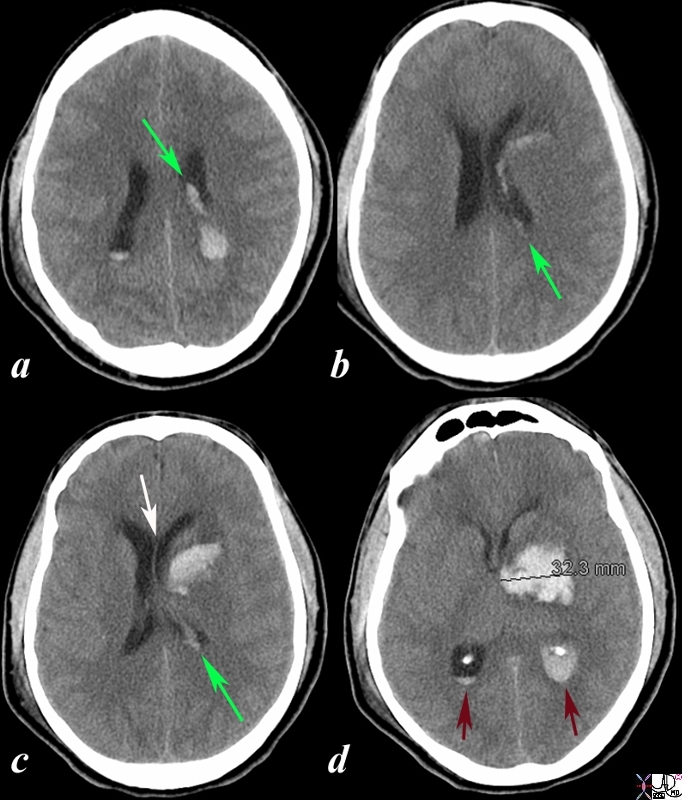- Consciousness/Discomfort
- Suspect Stroke
- Facial Droop Ask pt to smile
- Slurred Speech Ask pt “You cant teach a dog old tricks”
- Arm Drift Extend arms
- Time When was the last time patient was acting normal?
- Suspect Stroke
- Breathing
- Pulse
- 02 Sat SP02 94-95%
- BP – >90
- IV Also get a blood sugar
- Monitor/AED/12 lead EKG
- Call ER
In the ER
Evaluation within 10 minutes
reassess
- Consciousness/Discomfort
- Suspect Stroke
- Cincinnati
- Facial Droop Ask pt to smile
- Slurred Speech Ask pt “You cant teach a dog old tricks”
- Arm Drift Extend arms
- Time When was the last time patient was acting normal?
- NIH More Detailed
- Breathing
- Pulse
- 02 Sat SP02 94-95%
- BP – >90
- IV Also get a blood sugar
- Monitor/AED/12 lead EKG
- ACTIVATE STROKE TEAM
- ORDER CT SCAN
Ischemic Stroke


| Hemorrhagic Stroke |
| The CT is from a 33year old male with an acute left basal ganglial hemorrhagic stroke. The CT shows a hyperdense accumulation of hemorrhage(d) complicated by extension or rupture of the hemorrhage into the ipsilateral choroid plexus (green arrows a,b,c) and hemorrhage into the ventricles with blood lying dependently in the occipital horns (maroon arrows in c) and midline shift with septum pellucidum (white arrow of the eyes (lenses overlaid in d) mass effect on the left frontal horn (d) and midline shift exemplified by the shift of the septum pellucidum (white arrow c).
CODE brain lateral ventricles frontal horn occipital horn choroid plexus basal ganglia atrium atria perforators septum pellucidum fx hyperdense blood midline shift mass effect acute hemorrhage rupture calcification distortion dx CVA cerebrovascular accident stroke acute hemorrhage CTscan Computed tomography Image Courtesy Ashley Davidoff MD Copyright 2010 98551cL.8s |
If fibrinolytic therapy is to be instituted it has to be within 3 hours of the patients last known normal
Should not receive anticoagulants or antiplatelet therapy for 24 hours after fibrinolytic therapy
If not a candidate fir TPA should still get aspirin